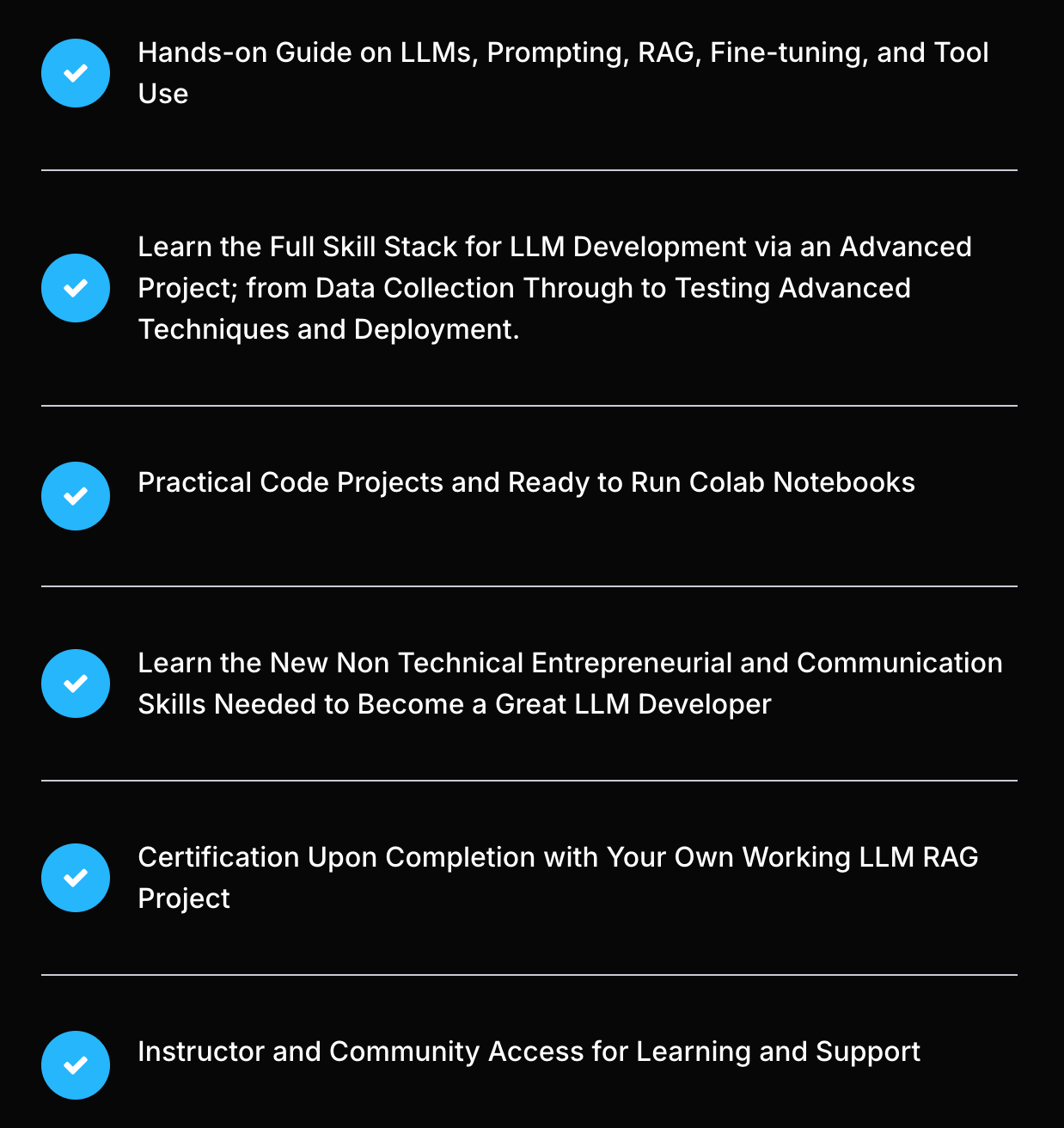Modernizing search in 2025: Multi-attribute embeddings and NLQs
From beginner to advanced LLM developer. Moving AI projects from PoC to prod with offline and online stores.
This week’s topics:
From beginner to advanced LLM developer
Moving AI projects from PoC to prod with offline and online stores
Modernizing search in 2025: Multi-attribute embeddings and NLQs
From beginner to advanced LLM developer (Affiliate)
If you've never built an advanced MVP with LLMs, here's your chance to do so...
developed a self-paced course to help you go From Beginner to Advanced LLM Developer(And that's the name of the course)
For context, Louis-François is:
The author of 𝗕𝘂𝗶𝗹𝗱𝗶𝗻𝗴 𝗟𝗟𝗠 𝗙𝗼𝗿 𝗣𝗿𝗼𝗱𝘂𝗰𝘁𝗶𝗼𝗻 (sold thousands of copies)
CTO of
An experienced (5+ years) AI educator on YouTube
The course is geared toward helping developers and engineers take their careers to the next level.
Thus, it predominantly focuses on the new skills top companies need.
And the best bit of it all?
You'll receive a certificate upon completion - and you'll have your own working LLM RAG project.

I’ve noticed Louis's brilliant AI and teaching skills through his bestselling book “Building LLMs for Production” and YouTube channel with 60k+ subs.
Now, everything comes together in this battle-tested course that will teach you how to:
Create, deploy, and manage advanced AI solutions
Build an impressive portfolio
Develop your own advanced LLM product
With these skills, you can:
Seamlessly transition into high-demand LLM and GenAI roles
Drive innovation in your current job
Turn your product ideas into reality
All within 50+ hours of focused learning

This course is best for:
Software developers
Machine learning engineers
Data scientists
Computer science and AI students
Who wants to take their career to the next level by mastering AI and LLMs.
Ready to go from beginner to an advanced LLM developer?
→ Get 15% off with code: Paul_15
→ 100% company reimbursement eligible
🔗 Support my work using the affiliate link:
Moving AI projects from PoC to prod with offline and online stores
Here's a key design choice that gets you from a PoC to production:
(Most people miss it when building AI/ML projects)
𝗔𝗻 𝗼𝗳𝗳𝗹𝗶𝗻𝗲 𝗮𝗻𝗱 𝗼𝗻𝗹𝗶𝗻𝗲 𝘀𝘁𝗼𝗿𝗲.
These are usually available in:
Feature stores
Platforms
AI Lakes
Thus, using these tools, such as a feature platform, will drastically speed up your "to-production" time.
To see how that works, let's design a fraud detection use case using Tecton (a leading feature platform) to put the offline and online stores into action:
Step 1: Define connectors to raw data
We have 2 main use cases:
Batch data sources for users or old transaction data (used for backfill)
Streaming data sources for asynchronous, near real-time transactions
Step 2: Define feature views
Based on the data sources, we can define multiple feature views as functions that:
Contain the feature logic
Are lazy initialized (aka not yet executed)
Here, we take the raw data and write Python code to transform them into features.
Step 3: Materialize features
In steps 1 and 2, we only defined how our feature pipeline should look like.
Now, we run a materialization step, which can be as easy as running a CLI command such as `tecton apply` that:
extracts the raw data using the connectors
transforms them into features using the feature views (defined as functions)
loads the features into the offline and online stores
Where the features are computed in the same way for both offline and online, eliminating the training-serving skew!
When using feature platforms such as Tecton, the feature pipelines compute and the online/offline stores are fully managed, removing a huge engineering effort from your shoulders.
Step 4: Use features
Leveraging the offline store, we have the features accessible for training with:
high throughput
point in time traveling for replicating 1:1 scenarios from production while training
automatic backfill
Leveraging the online, we have the features accessible for real-time deployments with:
access to the features to avoid state transfer between the client and ML model
low latency for real-time access
automatic updates for the latest features
real-time feature views for just in time materialization
Once these pipelines are in place, updating both stores is a breeze without worrying about managing feature pipelines or data stores.
To conclude…
Even if you don't use a feature platform, it's essential to understand how online and offline stores work to build them yourself.
Modernizing search in 2025: Multi-attribute embeddings and NLQs
The introduction of GenAI has brought some new challenges.
But not enough people are talking about this one:
The change in search behavior.
As highlighted by Algolia 's CTO - one of the leaders in AI search - users are expecting more natural conversations with search apps.
In other words, more people are using longer, natural queries instead of simple keywords.
This means traditional keyword search methods struggle to keep up.
That’s the problem we’re (Decoding ML) tackling in the first article of our search series:
How to modernize search for the 21st century.
Our solution?
We built a tabular semantic search retrieval service specifically for Amazon e-commerce product.
Here's what you'll learn:
Building semantic search for multi-attribute structured data
Implementing natural language queries (NLQs) using LLMs and Superlinked — no SQL required
Using MongoDB Atlas vector search as our vector database
Wrapping it all up in a RESTful API and hooking it to a Streamlit app
We built this system with the incredible support of Superlinked and MongoDB.
Check out the full article to dive into the architecture and learn how you can do the same:
Images
If not otherwise stated, all images are created by the author.





